Latinxs are the secret weapon to winning the streaming wars

This is the Sept. 29, 2022, edition of Latinx Files, a weekly newsletter about the American Latinx experience. Sign up here to get it in your inbox.
One of my favorite types of news to follow is the business of media and entertainment (shout out to Company Town and make sure to sign up for the The Wide Shot newsletter). I like it because itâs basically a bunch of legacy media companies battling upstarts with deep pockets, think Amazon and Apple, trying to outwit, outplay and outlast each other in the midst of a changing landscape â the arrival of streaming.
Itâs âSurvivor,â only instead of competing for $1 million these companies are vying for viewers and their own existence.
And like watching âSurvivorâ and knowing where an immunity idol is hidden, following this type of news can be a frustrating experience as a passive observer because itâs very clear what these companies should be doing in order to win the game.
The answer, of course, is to put Latinxs in front and behind the camera.
Thereâs evidence to support this claim. A recent report by Nielsen found that Latinxs spend more time streaming than other demographic groups â streaming accounts for 43.6% of total TV viewing for Latinxs, versus 34.8% for the total U.S. population. Part of this can be attributed to the fact that we tend to be younger â 58% of the U.S. Latinx population is under 34.
The Nielsen study also found that of the 530 most bingeable shows in 2021 and the first quarter of 2022, 42% of them featured Latinx talent in front of and behind the camera.
âInclusive content just wins,â Stacie de Armas, senior vice president at Nielsen, told The Times.
De Armas also noted that Latinx-led content tends to perform well.
âIt brings viewers to platforms, it has increased cultural watchability, and itâs highly bingeable by all audiences,â she said.
Indeed, the Nielsen study makes a pretty strong business case for why networks and studios should feature more Latinxs.
And yet they refuse to do so.
The Latinx experience chronicled
Get the Latinx Files newsletter for stories that capture the multitudes within our communities.
You may occasionally receive promotional content from the Los Angeles Times.
The Latino Donor Collaborative, a nonpartisan think tank âdedicated to reshaping the perception of Latinos as part of the American social mainstream,â recently unveiled its annual âLatinos in Media Report,â and it highlights just how bleak Latinx representation in Hollywood truly is.
Not just that, the report names names by providing a comprehensive breakdown by studio and network on how many shows or movies have Latinx talent.
For example, CBS, home of âSurvivor,â airs 19 shows on its network. Of these, only two have Latinx co-leads or ensembles.
The idea isnât to shame anyone, says Ana Valdez, president and CEO of the Latino Donor Collaborative. Rather, the purpose of the report is to provide a baseline to improve upon.
âWeâve produced this report for the past five years and itâs been very helpful to some decision-makers in the industry with whom weâve shared it privately,â she said.
âWe now want every studio and network to benefit from it, and we expect this report to become the industryâs benchmark to help all platforms overcome the severe Latino underrepresentation.â
(Full disclosure: I interviewed Valdez about the report onstage at Lâattitude, an annual business conference recently held in San Diego)
We keep talking about Hollywoodâs exclusion of Latinxs as if itâs some impossible math equation written on an MIT chalkboard that can only be solved by a savant janitor from Southie, but it really isnât that complicated.
It truly is this simple: Put us in front of and behind the camera, and youâll get a loyal audience.
One only needs to look at the growing buzz around Tenoch Huertaâs casting in âBlack Panther: Wakanda Forever.â The Mexican actor plays antagonist Namor, one of Marvelâs oldest characters, and his inclusion in the movie has my social media timeline excited. Such is the hype surrounding Namor that a recent movie still has already been turned into a meme by Paisa Twitter. Rest assured that when the box office figures come in, Latinxs will have bought a sizable portion of tickets for that movie.
My biggest takeaways from these two reports is that itâs pretty clear that we are watching. Itâs now up to media executives to decide if itâs their shows and movies.
Consider subscribing to the Los Angeles Times
Your support helps us deliver the news that matters most. Become a subscriber.
Gavin Newsom blinks
It turns out que sĂ se pudo.
On Wednesday, after hinting for weeks that he would veto the bill, California Gov. Gavin Newsom signed Assembly Bill 2183 into law. As Iâve previously covered in this newsletter, AB 2183 is a bill endorsed by the United Farm Workers that would make it easier for agricultural workers in California to vote in union elections.
Newsomâs signature comes with some caveats, outlined in this story by Jessica Garrison, but itâs hard not to see this as the governor capitulating to pressure from labor groups, editorial boards in California, and even President Biden.
In her analysis, Times columnist Anita Chabria rightly points out that Newsom miscalculated the power that the politics of immigration have on Latinx voters, and hints that there is some validity to the criticism that the Democratic Party is taking the Latinx electorate for granted.
Things we read this week that we think you should read
â Company Town reporter Meg James has the latest on the KTLA saga. The Los Angeles-area news station is facing backlash after the departure of anchor Lynette Romero, who left KTLA for rival KNBC-TV Channel 4 after 24 years. As James points out, losing Romero âleaves KTLA without a full-time Latina anchor to serve a market in which Latinos make up nearly 50% of the population.â
For its part, KTLA appears to be downplaying the criticism.
âWe are very comfortable with our diversity efforts but it is always something that we are working to improve,â KTLA and Nexstar spokesman Gary Weitman told The Times.
â Congratulations to TĂo Albert Pujols, who on Friday became just the fourth player and the first Latino in Major League Baseball history to hit 700 runs. The other members of the 700 club include Babe Ruth, Hank Aaron and Barry Bonds. As sportswriter Jorge Castillo notes in his report, Pujolsâ historic accomplishment is seen as a win for the Latinx community at large. Hereâs what Dodgers broadcaster JosĂŠ Mota told Castillo of his friend Pujols:
âWe used to think of Babe Ruth like, âOh my God, Babe Ruth. Did he really do that?ââ Mota said. âAnd now Albert is up there. Itâs like heâs superhuman. Heâs carried the flag not only for Dominican, but Latin American players.â
â Q.E.P.D.: Columnist Gustavo Arellano wrote this touching tribute to Ernest Z. Robles, who died at the age of 92 this month. In 1975, Robles took out a $30,000 mortgage to create the Hispanic Scholarship Fund. Over the decades, the nonprofit has given scholarships to tens of thousands of Latinx students, including Arellano and myself.
â Prism Reports has a new story about how the military is increasing its efforts to target Latinx students for enlistment. (H/T Gustavo Arellano)
âStaff writer Karen Garcia spoke to Jerry Tello, a healing practitioner from South Los Angeles who advocates for using traditional Indigenous practices to help people emotionally, mentally and spiritually heal. This Q&A is part of âHow to Save a Life,â a series of stories by The Times aimed at helping readers heal. Itâs also a part of a larger story Garcia is working on curanderismo. She is currently looking for people to share their stories of curanderxs helping their mental health. You can hit her up at [email protected].
And now for something a little different...

)

)
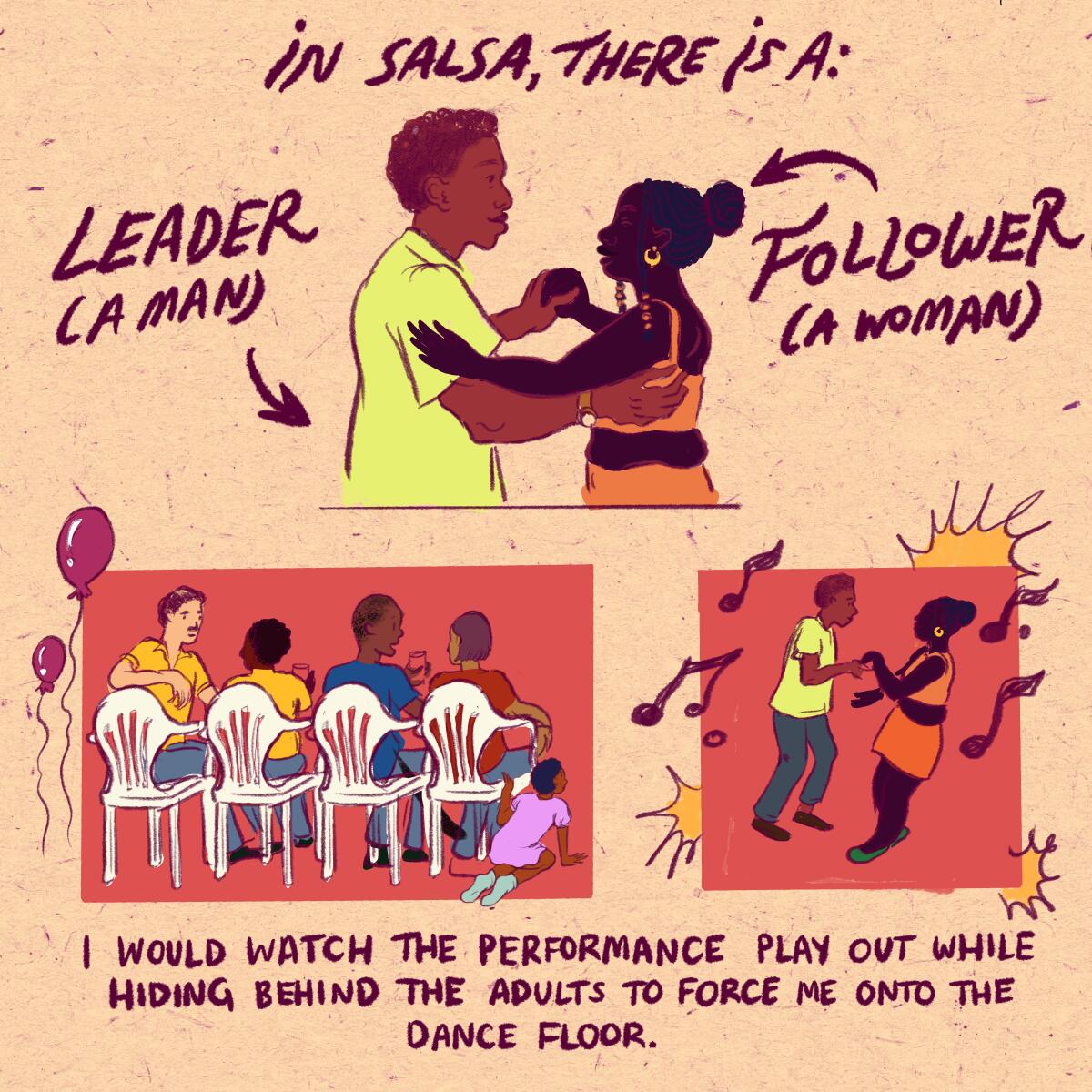
)
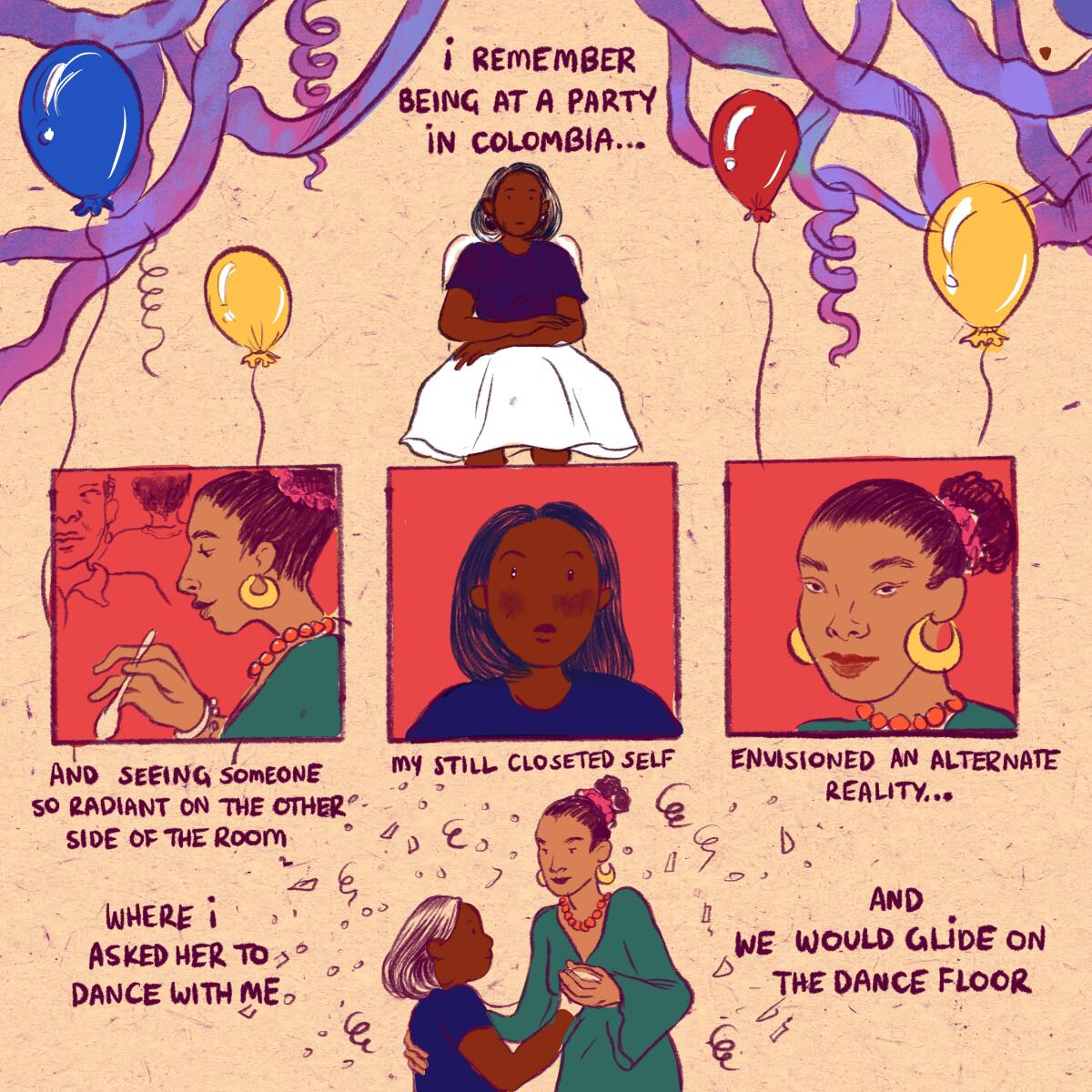
)
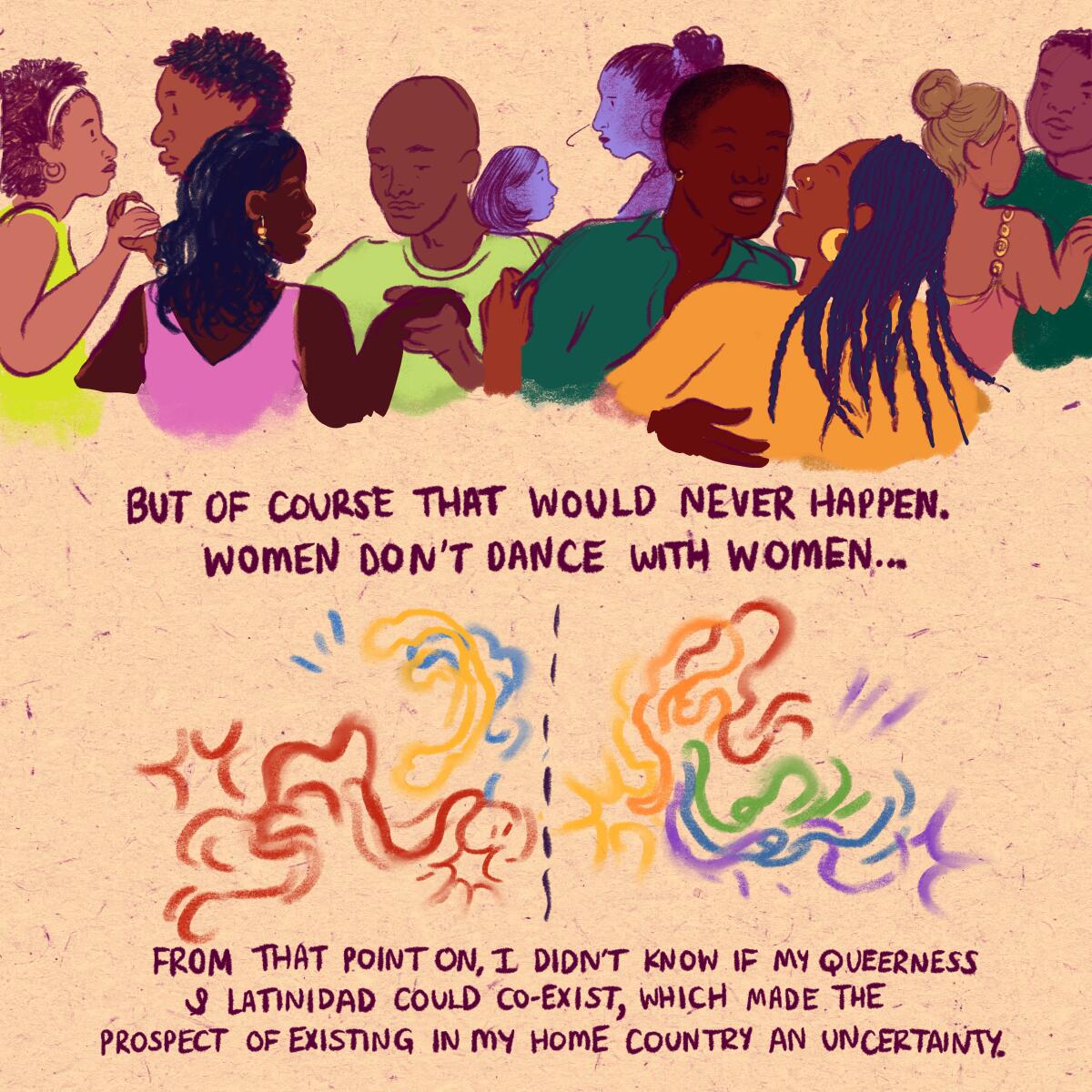
)
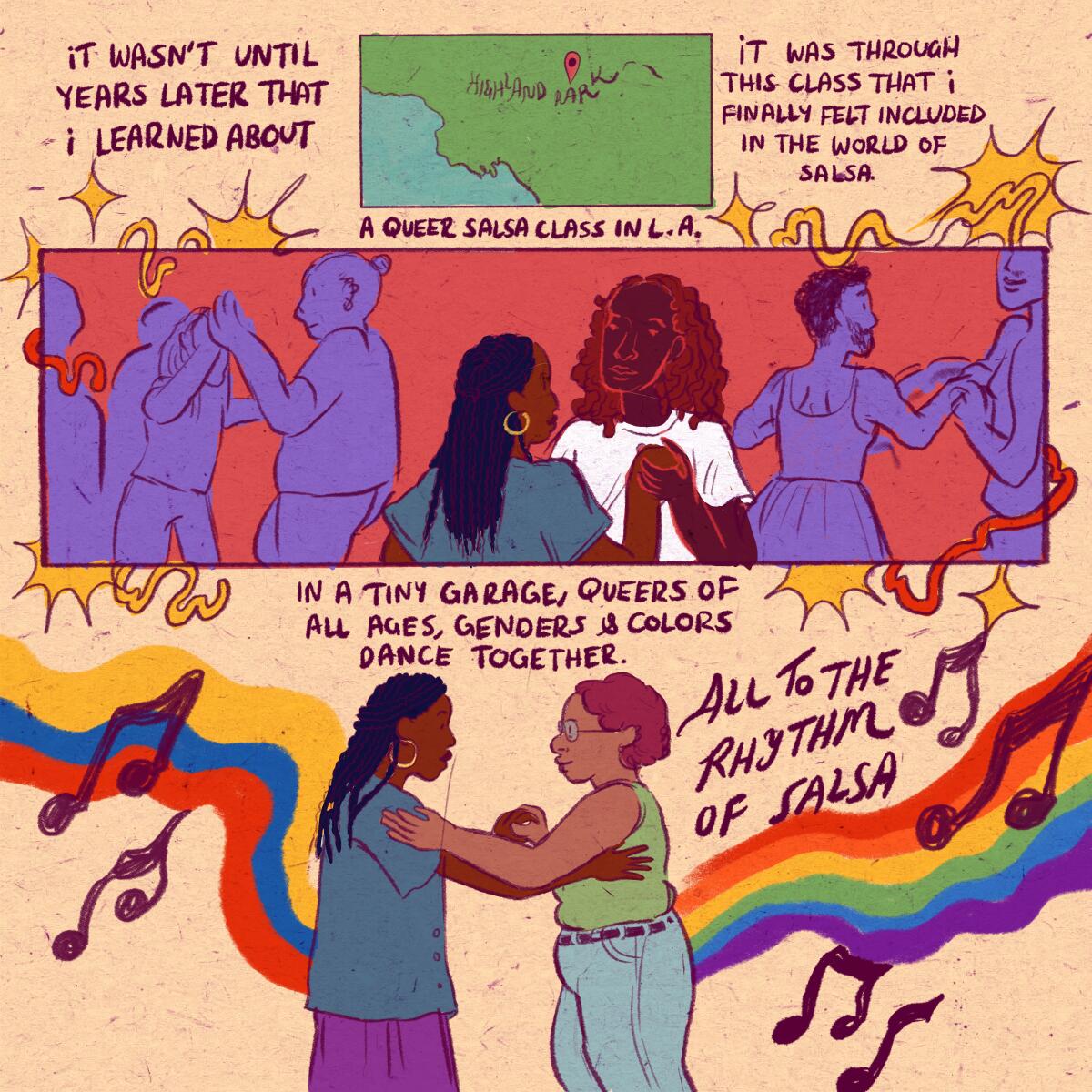
)
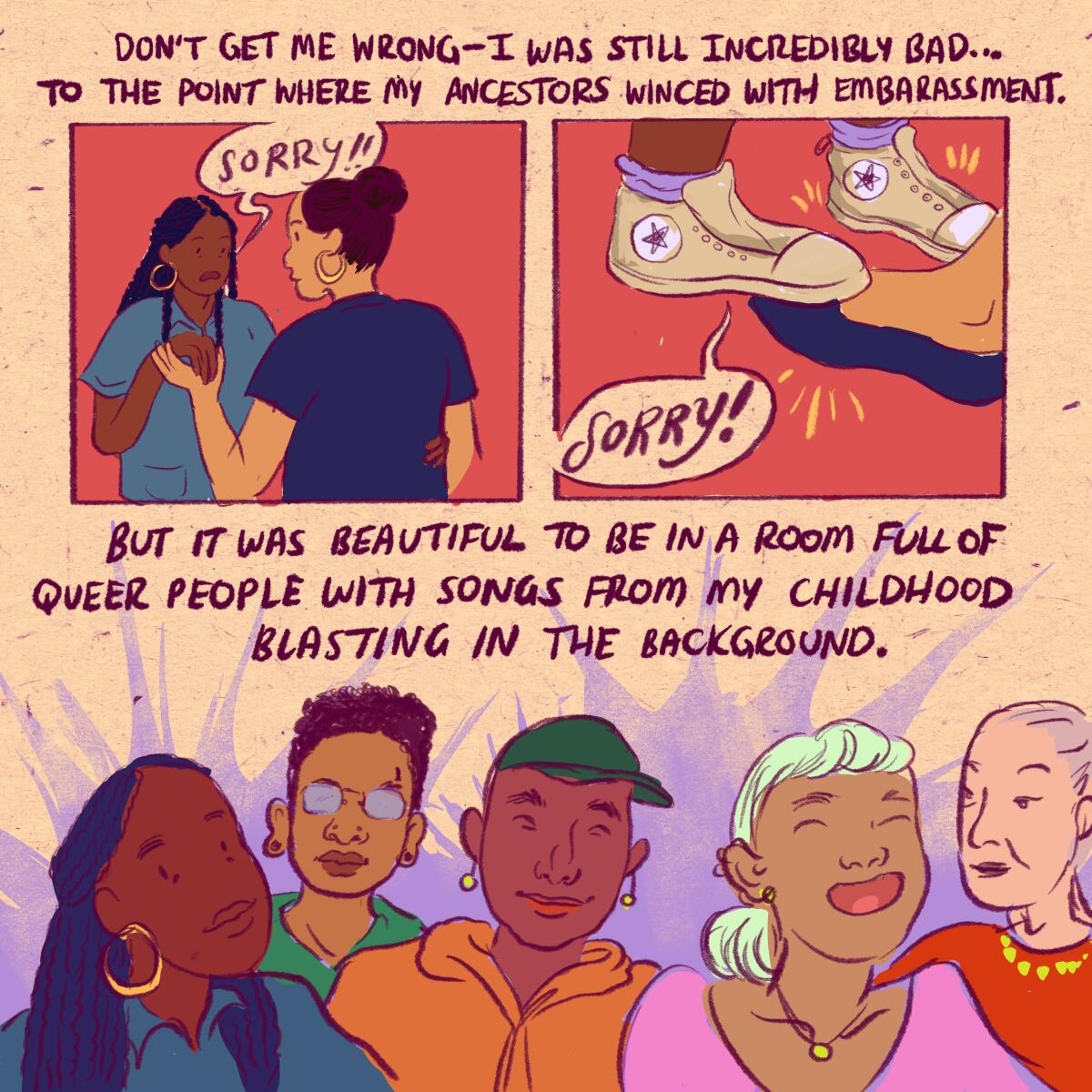
)
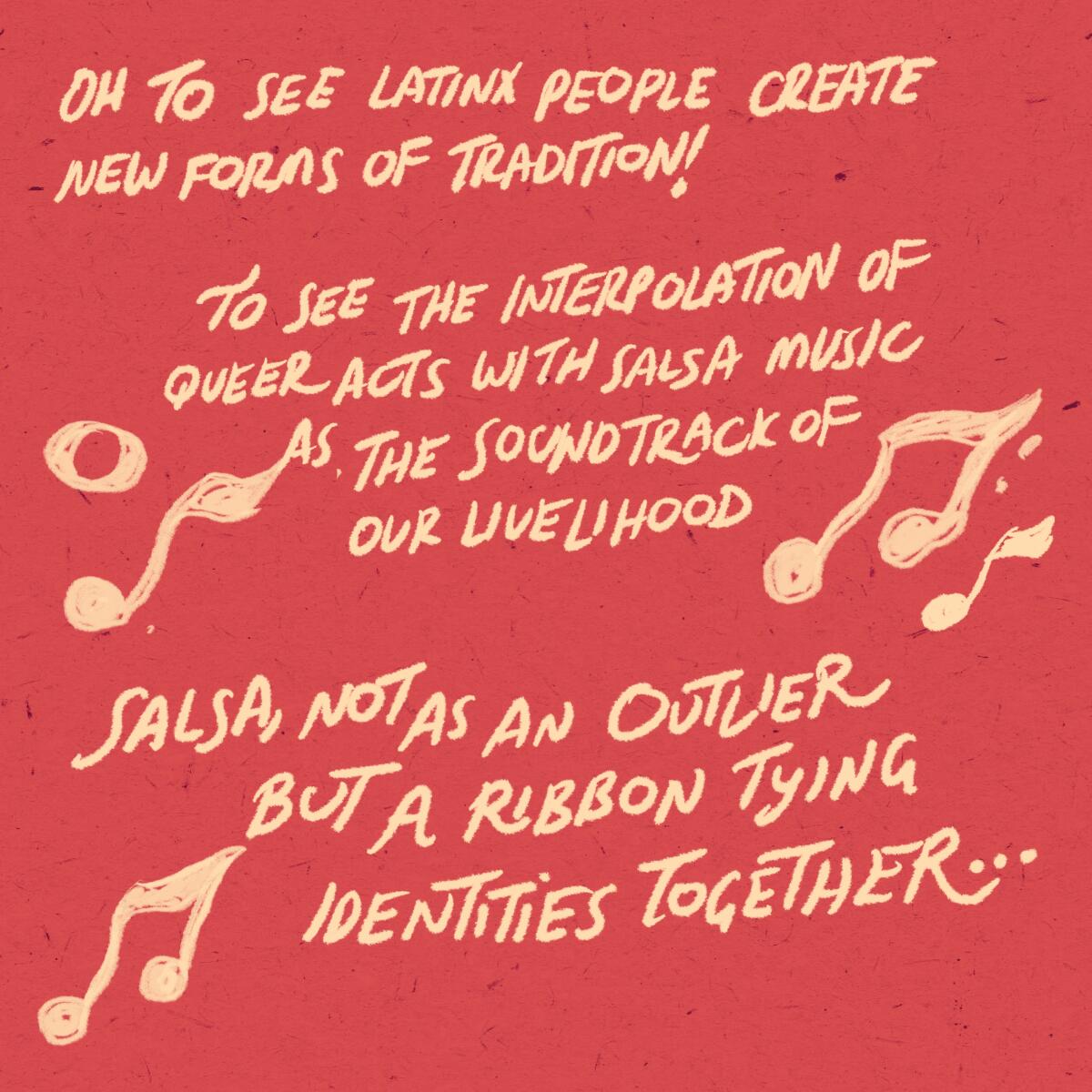
)

)

)
Arantza Pena Popo is an angsty Afro-Latinx comic artist, zinester and animator based in Los Angeles and born in Cali, Colombia. She enjoys making vibrant comics about queerness, mental illness, the body keeping score, and spontaneously surreal abstract shapes.
âThis comic is about how when I was growing up, salsa dancing was an exclusively heterosexual activity between a man and a woman. This felt alienating as a queer person, and it wasnât an option I saw viable until I learned of the communities of queer people flourishing through salsa dance. I chose to draw it because it was a seminal point in my life where I realized my queerness and Afro-Colombian culture could co-exist. (P.S. Iâm still an awful dancer, but Iâm getting there!)â
Are you a Latinx artist? We want your help telling our stories. Send us your pitches for illustrations, comics, GIFs and more! Email our art director at [email protected].
The Latinx experience chronicled
Get the Latinx Files newsletter for stories that capture the multitudes within our communities.
You may occasionally receive promotional content from the Los Angeles Times.




